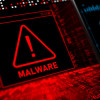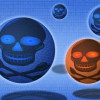George Ledin teaches students how to write viruses
In a windowless underground computer lab in California, young men are busy cooking up viruses, spam and other plagues of the computer age. Grant Joy runs a program that surreptitiously records every keystroke on his machine, including user names, passwords, and credit-card numbers. And Thomas Fynan floods a bulletin board with huge messages from fake users. Yet Joy and Fynan aren't hackers—they're students in a computer-security class at Sonoma State University. And their professor, George Ledin, has showed them how to penetrate even the best antivirus software.
The companies that make their living fighting viruses aren't happy about what's going on in Ledin's classroom. He has been likened to A.Q. Khan, the Pakistani scientist who sold nuclear technology to North Korea. Managers at some computer-security companies have even vowed not to hire Ledin's students. The computer establishment's scorn may be hyperbolic, but it's understandable. "Malware"—the all-purpose moniker for malicious computer code—is spreading at an exponential rate. A few years ago, security experts tracked about 5,000 new viruses every year. By the end of this year, they expect to see triple that number every week, with most designed for identity theft or spam, says George Kurtz, a senior vice president at antivirus software maker McAfee. "You've got a whole business model built up around malware," he says.









































































